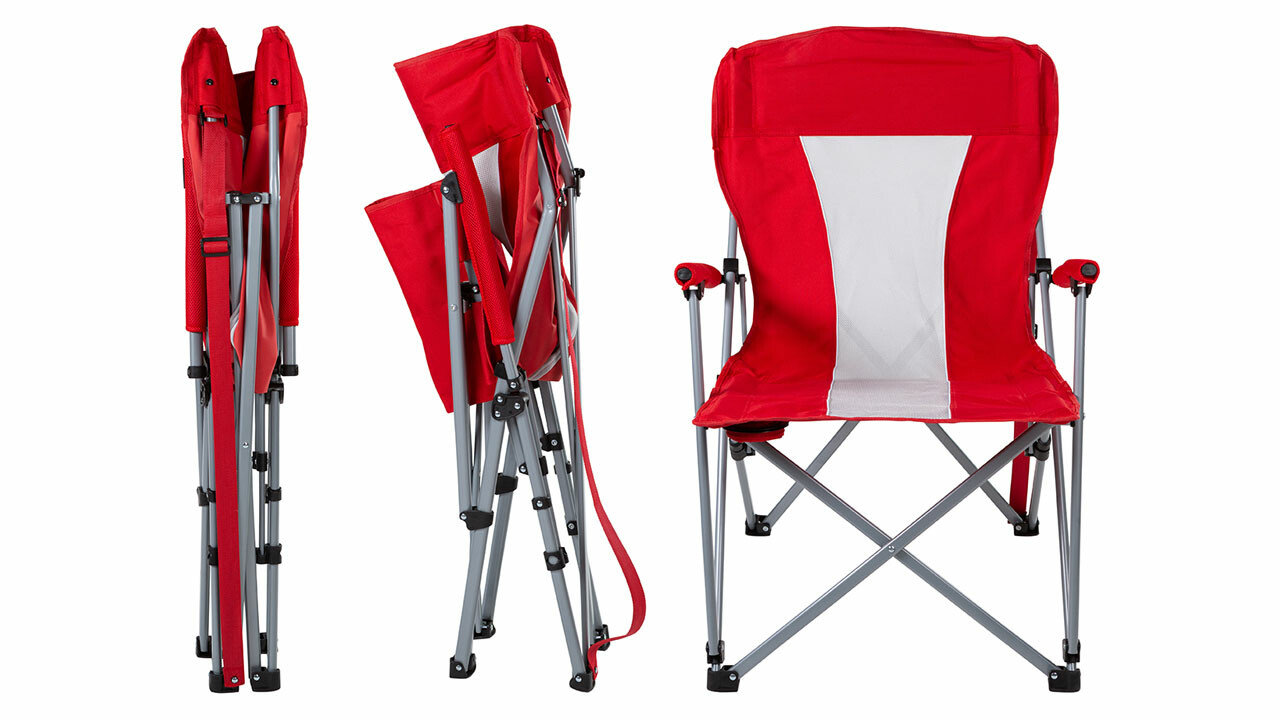
Product Spotlight: Folding Chairs
We take them for granted, but folding chairs improve our lives in multiple ways. They've even played a role in the civil rights movement.
Rick Cundiff
As summer approaches, it’s time to gear up for outdoor activities. The park, the beach, campsites and outdoor concerts are calling. If you’re heading out to those or just enjoying your back yard at home, one accessory is a must – the folding chair.
If you’re like most of us, you probably don’t give too much thought to folding chairs. But you should. Not only do they allow us to rest our buns in the sun, they also can be a powerful promotional tool. And they go back further in history than you might think. Let’s take a look at the history of these handy helpers we take for granted.
Folding Chairs Are Nothing New
We tend to think of folding chairs as a relatively modern invention, but their origins date back to at least ancient Egypt, around 3100 BC.
The National Museum of Denmark features a folding chair from the Bronze Age that was found in a coffin during an excavation in 1891. It’s believed to be from sometime in the 14th century BC.
Early folding chairs were frequently simple devices, consisting of an X-shaped wooden frame and a fabric or leather seat. These had the advantage of being lightweight and easy to transport. They became popular with traveling nobles and military commanders.
Folding, Yes; Simple, No.
As time went on, folding chairs maintained their utility, but grew increasingly ornate. Many were inlaid with intricate carvings and decorated with ivory. As you might expect, these chairs were not meant for commoners. Instead, they were typically occupied by high rulers and clergy.
Gradually, folding chairs became popular for use by church congregations. They allowed for fast setup and takedown, and could be set up just about anywhere. Thus, the original elite design became accessible to the masses.
That doesn’t mean the ornate versions went away. One notable style from the 15th century is the Savonarola chair, named for controversial Italian Dominican friar Girolamo Savonarola. This highly decorated folding chair style remains available for sale today.
19th and 20th Century Innovation
The next major evolution of the folding chair came from Boston inventor John Cram. In 1855, he patented a design closer to the modern design as we know it today. It proved more comfortable and robust. Seven years later, Connecticut entrepreneur John Dann created a folding camping chair.
In 1911, Nathanial Alexander added another innovation to the basic design, a book rest on the back. Church choir members could use it for music, and other members could use it for Bibles, prayer books, or hymnals.
Introduction of the Lawn Chair
Two decades later, another inventor, Philip E.G. Harrison created what we refer to today as the “party chair” or folding lawn chair. It was the same style as the classic lawn chair, but it wasn’t practical to mass produce. That would take another 25 years.
In 1956, Frederic Arnold patented the folding lawn chair we know and love today. This classic design featured a lightweight metal frame and plastic webbing for the seat and back. It was easy to produce in vast numbers, and the rest is history.
The Folding Chair and the Civil Rights Movement
In the mid-20th century, the folding chair became both a tool and a symbol of the civil rights movement. It gave civil rights activists and participants an opportunity to sit with dignity at sit-ins, voter registration drives, and rallies.
Pioneering civil rights leader and U.S. Representative Shirley Chisholm even used the folding chair as a metaphor for inclusion.
“If they don’t give you a seat at the table, bring a folding chair,” she said.
Folding Chairs Today
Today’s folding chairs are available in a variety of styles. The classic metal chair with the rounded back and nearly square seat is still a fixture in many places such as hotel meeting rooms and school cafeterias.
An increasingly popular alternative in recent years is made of lighter metal and features a plastic back and seat. They have the advantage of being much lighter and easier to set up, take down and transport.
Modern outdoor folding chairs commonly use a sturdier metal frame than Arnold’s original lawn chair design, and usually feature a canvas-like material for the seat and back. Although they weigh more than the older style, they’re far sturdier.
These chairs can come in varying widths, and include extras such as cupholders or even clip-on sunshades.
Another significant advantage is that they allow for custom imprinting. That lends great value to folding chairs as a promotional tool. (You didn’t think we’d ignore that element, did you?)
Outdoor events such as concerts, sporting events and lectures are the ideal venue for custom imprinted folding chairs promoting outdoor-oriented brands such as sporting goods stores. With a logo or brand on the back, they’re literally a sign planted on the site for the duration of the event.
Their versatility makes folding chairs of all kinds a staple of modern life. Whether you need to set up an auditorium for a graduation ceremony or use them to enjoy a concert or soccer game, modern folding chairs fill the bill. If you’d like to find out more about custom imprinted folding chairs, call or email us to find out more.
Rick Cundiff
Content Director, Blogger
Rick Cundiff spent 15 years as a newspaper journalist before joining TJM Promos. He has been researching and writing about promotional products for more than 10 years. He believes in the Oxford comma, eradicating the word "utilize," and Santa Claus.
